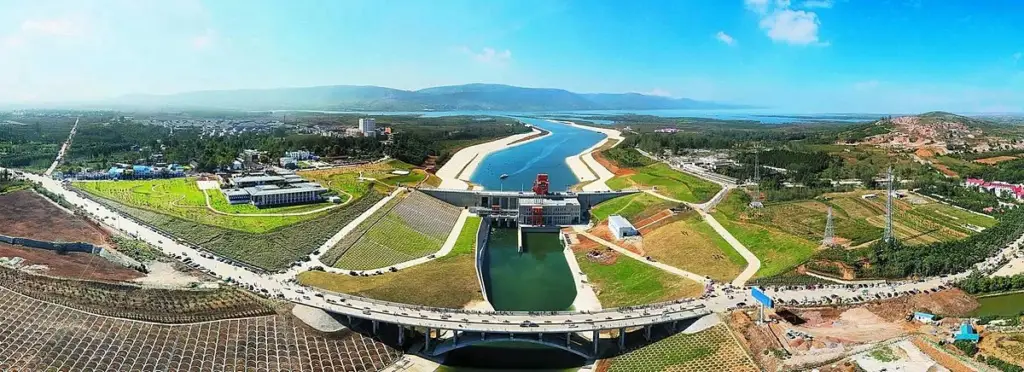China is embarking on the world’s largest water diversion project, aiming to defy nature itself. With thousands of kilometers of artificial canals, aqueducts, and tunnels that cross mountains, China plans to bring freshwater to its dry industrial centers in the north. This article explores the South-to-North Water Diversion Project, its costs, motivations, environmental impact, and potential benefits for the Chinese people.

Ancient Geographical Challenges
China’s geography has always been a double-edged sword. The Yangtze and Yellow river systems have supported human civilizations in eastern China for thousands of years, providing fertile floodplains and sustaining a large population. However, the northern and far western regions are dry or mountainous, making them less suitable for agriculture. This geographical disparity is evident, with 94% of China’s population residing in the east.
Water Scarcity in Northern China
Beijing and other northern cities have long been population, agriculture, and trade centers. As China’s population and wealth grew in the mid-20th century, water resources became scarce. Northern cities like Beijing relied on groundwater, which became over-exploited due to increasing urban and industrial demand. Additionally, the nearby Gobi Desert has been expanding, exacerbating the water shortage through desertification.

Mao Zedong’s Vision
In the early 1950s, it became clear that northern China would struggle to supply enough water to its growing population. In 1952, Mao Zedong proposed transferring water from the south to the dry northern regions. This vision was finally approved in 2002, leading to the South-to-North Water Transfer Project, aimed at creating a network of aqueducts, tunnels, reservoirs, and dams to transfer water from the water-rich south to the water-poor north.
The Eastern Route
The Eastern Route begins near Yangzhou, utilizing a major branch of the Yangtze River. Water is pumped from the Yangtze into the Jing-Hang Grand Canal, the world’s longest constructed artificial waterway. The water then passes through an underground tunnel across the Yellow River and is transferred via aqueducts to Tianjin, bordering Beijing. The Eastern Route, over 1,100 kilometers long, was expected to carry water by 2013 but faced delays, finally delivering water in 2017, benefiting 10 million people in Tianjin.

The Central Route
The Central Route, lacking pre-existing infrastructure, was more challenging. Starting at the Danjiangkou Reservoir, the Danjiangkou Dam was elevated by 15 meters to allow water to flow “downstream” to the north without pumping stations. This construction required relocating over 300,000 people. The route, featuring notable structures like the Shahe Aqueduct, stretches over 1,200 kilometers and reached Beijing in 2014. By 2030, it is expected to transfer 12 cubic kilometers of water annually.
The Western Route
The Western Route remains in the planning stage due to its immense challenges. The plan involves creating waterways and tunnels connecting the Yangtze and Yellow Rivers through the Qinghai-Tibet Plateau, 3 to 5 kilometers above sea level. This route would require engineers to carve through mountains, making it the most difficult and ambitious part of the project. Estimated to complete by 2050, it could bring 17 cubic kilometers of water annually to northern provinces, serving nearly 100 million people.
Environmental and Social Impacts
While the project aims to alleviate water scarcity, it has raised significant environmental concerns. The artificial waterways disrupt the natural flow of rivers, leading to the disappearance of 600 rivers. Industrial waste and sewage have contaminated these waterways, as seen in the Danjiangkou Reservoir, where industrial cities like Shiyan dump waste into the Han River.
Additionally, the construction of the Western Route through a seismically active region could trigger landslides and environmental destruction. The project’s cost, estimated at $62 billion, does not include the maintenance expenses for the extensive network of canals, aqueducts, dams, tunnels, and reservoirs.
Like Us on Facebook!
Conclusion
The South-to-North Water Transfer Project has completed two out of its three planned routes, benefiting 140 million people in water-starved regions. However, the project’s financial, environmental, social, and economic costs are substantial. The project’s ultimate success in supplying clean water to northern China remains to be fully realized.
Subscribe Us on YouTube!
What Do You Think?
What are your thoughts on the South-North Water Transfer Project? Do the benefits outweigh the environmental costs? Should the Western Route be constructed? Share your opinions in the comments below.




















